Похожие презентации:
Hygiene of work with chemical substances industrial and agrochemical toxicology
1. HYGIENE OF WORK WITH CHEMICAL SUBSTANCES INDUSTRIAL AND AGROCHEMICAL TOXICOLOGY
HYGIENE OF WORK WITHCHEMICAL SUBSTANCES
INDUSTRIAL AND
AGROCHEMICAL
TOXICOLOGY
2. TOXICOLOGY – science, which investigated laws of action chemical substances on organism, pathogenesis and clinical picture of
poisonings3. MAIN DIVISIONS OF TOXICOLOGY:
-General toxicology-Industrial toxicology
-Agricultural
toxicology
agrochemicals)
(toxicology
of
-Military toxicology
- Municipal toxicology (toxicology of chemical
substances, using in home conditions)
4. GENERAL TOXICOLOGY
MAIN INDEXES OF TOXICITY OF CHEMICALSUBSTANCE
( TOXICOMETRY OF CHEMICAL SUBSTANCE)
1.
Indexes of toxico-dynamics – level of toxicity
of chemical substance
2.
Indexes of toxico-kynetics – speed of
absorbing, matabolism and removing chemical
substance from organism
5. BASIC PARAMETERS OF TOXICOMETRY CHEMICAL SUBSTANCES
PARAMETERS OF TOXICODYNAMICS1. ACUTE TOXICITY
Lethal doses and concentrations
DL 0, DL 50, DL 100 (LC)
LIMIT of acute integrated action
Lim ac. integr.
LIMIT of acute specific action
Lim ac. sp.
6. PARAMETERS of TOXICODYNAMICS
2. SUBACUTE TOXICITYCoefficient of cumulation - C cum. = DL50 summary / DL50
3. CHRONIC TOXICITY
LIMIT of chronic integral action
Lim ch. integr.
(LOAEL) *
LIMIT of chronic specific action
Lim ch. sp.
Zone of chronic action
Z ch. = Lim ac. / Lim ch.
.
SAFE LEVELS FOR the MAN
Maximal not acting dose (NOAEL) *, MPC, MPL, MPD
LOAEL - lower level of observed harmful effect
NOAEL - level of unobservable harmful effect
7. PARAMETERS OF TOXICOKYNETICS
- Time of half-life substance in organism Т 50- Time of full removing substance from
organism Т 95
- Coefficient of cumulation C cum.
8. CLASSIFICATION CHEMICAL SUBSTANCES BY LEVEL OF TOXICITY
I class of danger -EXTREMELY DANGEROUS MATERIALS
(Extremely toxic)
II class of danger –
HIGH DANGEROUS MATERIALS
(High toxic)
III class of danger -
MIDDLE DANGEROUS MATERIALS
(Middle toxic)
IV a class of danger –
LOW DANGEROUS MATERIALS
(Low toxic)
9. CLASSIFICATION CHEMICAL SUBSTANCES BY LEVEL OF TOXICITY
ParameterI class
II class
III class
IV class
MPC in air, mg / m3
< 0,1
0,1 - 1,0
1,0 - 10
> 10
DL 50 per oral, mg/kg
< 15
15 - 150
150 - 5000
> 5000
DL50 at skin, mg/kg
< 100
100 - 500
500 - 2000
> 2000
CL 50 inhalation, mg/kg
< 500
500 - 5000
5000-50000
> 50000
Zone acute action Z ac.
<6
Zone chronic action Z ch. > 10
6 - 18
18 - 54
> 54
10 - 5
5 - 2,5
< 2,5
10. CLASSIFICATION TOXICANTS BY ABILITY TO CUMULATION
Level of cumulationCoefficient cumulation C cum.
Supercumulation
<1
Expressed cumulation
1-3
Middle cumulation
3-5
Weak cumulation
>5
11. WAYS OF ENTERING, ADSORBTION AND REMOVING POISONS FROM ORGANISM
WAYS OF ENTERING:Through lungs – Inhalation way – most dangerous
way
Through a skin – fat-soluble substances, heavy
metals
Through mouth and mucous stomach and intestines
– in professional conditions very rare way
12.
WAYS OF ADSORBTION:in Liver
in Blood
in Bones
in Lymph
in Hair
in Nails
13.
WAYS OF REMOVING:Through Lungs – flying substances
Through Skin – heavy metals
Through Intestines with faecal masses – bad soluble
substances
Through Renal ways with urine – soluble substances
Through glands of external secretion – Lactic, Saliva,
Sweat, Tear glands
CONFIRMATION DIAGNOSIS OF THE POISONING –
definition toxins or it metabolites in blood and
excreted biosubstrates
14. MECHANISMS OF DETOXICATION POISONS IN ORGANISM
1. CHANGEPOISON:
CHEMICAL
STRUCTURE
OF
-
Hydroxylation (connection OH-groupe)
-
Methylization (connection СН3-groupe)
-
Oxidation
-
Regeneration
-
Connecting (with glucuronic acid, amino acids etc.)
15. MECHANISMS OF DETOXICATION POISONS IN ORGANISM
2.REMOVING FROM ORGANISM –through intestines, kidneys, lungs, skin, glands (as
poison or as metabolites) - probably secondary
damage these bodies.
3. DEPOSITION IN BODIES AND TISSUES temporary decreasing concentration of poison in
blood.
(At unfavorable conditions – poison going out from
depot - aggravation chronic poisoning).
16. THE BASIC PARTS OF DETOXICATION SYSTEM
Mechanisms of protection1. Microsome oxigenation (in liver)
Parameters
Microsomal monooxygenase
cytochromes Р- 450, b5
2. Conjugation
Restored glutathione
3. Bioenergy processes
activity of phosphatase
4.Peroxide oxidation of lipids
(POL)
diene conjugates, malonic
dialdehyde
5. Antiradical and antiperoxide
protection
activity of catalase,
peroxidase, superoxide
dismutase
At activation 1 and 4 links in norm must be activated other parts, at their
oppression - toxicogenic dishomeostasis (concealed decompensation).
17. KINDS OF CUMULATION POISONS IN ORGANISM:
1.MATERIAL - accumulation poison or it
metabolites in organism
2.
FUNCTIONAL - accumulation only toxic
effects poison in organism
3.
MIXED - accumulation in organism
poison and it pathological effects
18. DISPLAYS OF ACTION POISONS ON ORGANISM:
1.ACUTE poisonings (specific and nonspecific)
1.
CHRONIC poisonings (specific and nonspecific)
3.
THE SPECIFIC and REMOTE effects:
- Allergenic
- Gonadotrophic
- Embriotropic
- Immunodepressive
- Cancerogenic
- Mutagenic
- Drop of lifetime
19. INDUSTRIAL TOXICOLOGY CLINICAL PICTURE OF ACUTE POISONINGS BY MAIN INDUSTRIAL POISONS
20. CARDINAL SIGNS OF LEAD POISONING (SATURNISM):
1.Lead "border" on gums grey color
2.
Lead color of a skin (pale – grey color)
3.
Lead encephalopathy – violations of CNS
4.
Lead polyneuritis – violation NS (pareses and
paralyses)
5. Lead colic - sharp colic pains in a stomach, which
can not take away by spasmolytic drugs
6.
Liver syndrome - development toxic hepatitis
21.
22.
Changes in blood at saturnism:In the beginning – irritation blood formation organs:
In blood:
1)
Basophilic stippling of erythrocytes (more than
500 on 1 million.)
2)
Reticulocytosis of 45- 60 %
In further - lead anemia
leucopenia, trombocytopenia.
hypochrome
Changes in urine:
·
·
porphyrin-uria - more than 50 - 60 mcg / l
content lead more than 0,04 mg / l
type,
23.
24.
POISONING BY LEAD TETRAETHYL (additionto benzene):
- Infringement of CNS, liver, blood formation
- Vegetative triad: bradycardia, hypotonia,
hypothermia
25.
POISONING BY MERCURY (MERCURIALISM):- Mercurial “border“on gums black color
- Mercurial neurotism
- Mercurial eretism (whining, sense anxiety)
- Mercurial encephalopathy
- Mercurial gingivitis (inflammation tonque)
- Violations cardiac system, kidney (nephrosis)
- In blood - lymphocytosis, monocytosis, leukopenia,
anemia
- Content of mercury in urine more than 0,01 - 0,02 mg/l
26.
27.
28. POISONINGS BY INDUSTRIAL POISONS – ORGANIC COMBINATIONS
Hydrocarbons of aromatic structure (dissolvents) benzene, toluene, ksylol.- Violation CNS as narcotic action, polyneuritis
- Violation hemopoesis - leukopenia, thrombocytopenia,
aplastic anemia
- Hepatotropic action - toxic hepatitis
- Allergenic effects
- Gonadotrophic activity
- Mutagen and cancerogenic action - polycyclic
aromatic hydrocarbons - (benz (а) pyren)
29. SYNTHETIC POLYMERIC And PLASTIC SUBSTANCES
At heating such substances can formed the differentexcreting metabolites, which gives such kinds of
action:
- Narcotic action
- Irritation action
- Influence on blood genesis, internals
- Infringement pregnancy
- Allergenic activity
- Teratogenic and embryotropic action
- Cancerogenic effects
30. THE REMOTE AND SPECIFIC EFFECTS OF INDUSTRIAL POISONS AND POLLUTANTS OF ENVIRONMENT
The remote effectsSpecific effects
Oncogen (cancerogenic)
Gonadotrophic
Mutagen
Allergenic
Teratogenic
Emryotropic
Immunodepressive
Drop of lifetime
31. ONCOGEN (CANCEROGENIC) ACTION
Chemical cancerogen – it is:1)
substance or it mixture, which can cause in the
man or animal formation tumors which are not
meeting without their action (true cancerogens initiators)
2)
substance, which can cause acceleration
formation or earlier appearance of usial tumors
(promoters – pre-cancerogens)
32. CLASSIFICATION CANCEROGEN SUBSTANCES (by International Agency of Cancerogen Investigation)
1. Cancerogenic for the man(23 substances - arsenic, asbest, chrome,
beryllium, nickel, carbon black, petroleum,
benzene etc.)
It cancerogenicity are proved by the
epidemiological data on people
33.
2.Probably cancerogenic for the man:
а) Probable cancerogens (produce tumors in 80-100 % experimental
animal in 4-6 months) –
14 substances - benz (а) pyren, Chlorine – organic combinations, etc.
b) Possible cancerogens (produce tumours in 20-30 % experimental
animal during life) –
47 substances, for example, cadmium, nitrozocombinations, some
pesticides
3.
Not categorized on cancerogenic ability (the data of
cancerogen activity are discordant) - 64 substances, for example,
lead and its salts
4. Probable not cancerogenic for the man – other
substances – for which until now no data about cancerogen activity.
34. MUTAGENIC EFFECT
CLASSIFICATION CHEMICAL MUTAGENS1. NATURAL - inorganic and organic substances, meeting in a
nature (mycotoxins, oxides of nitrogen, nitrites etc.)
2.
ANTHROPOGENIC - medicines, pesticides, alimentary additives
EXAMINATION MUTAGEN ACTIVITY SUBSTANCES:
1) experiments on model tests - systems - microbes, plants, cells of
the man and animal in experience in vitro, in vivo
2) cyto-genetic monitoring of the population and working in contact
with mutagen factors
3)
biological indication mutagens in biosphere
35. EMBRYOTROPIC ACTIVITY OF CHEMICAL SUBSTANCES
KINDS of VIOLATION OF FETATIONINFLUENCE OF CHEMICAL MATERIALS:
UNDER
1.
Embryotoxic action - destruction of
fetus, drop mass and dimension of embryons,
violations of normal differentiation tissues of
embryon
2. Teratogenic action - anomalies and defects of
development of new-born.
36. EMBRYOTROPIC ACTIVITY OF CHEMICAL SUBSTANCES
Chemical teratogens - more than 600 materials –mercury and its combinations, dioxines, pesticides,
benzol, benzine, etc.
The evaluation of embryotoxity will be carried out in
experiments on laboratory animal.
In experiment it is determined Lim sp. action and
Z sp. = Lim integr. / Lim sp.
If Z sp. > 1, the substance has selective
embryotropic activity - it is taken into account at
installation MPC.
37. OTHER REMOTE EFFECTS AT THE ACTION OF CHEMICAL MATERIALS:
- Neuro-psychical violations at action phosphorusorganic combinations.- Violations of haemopoiesis (anemia), cardiac
functions (acceleration of infarcts, development of
atherosclerosis)
–
at
action
chlorine-organic
combinations.
38. HYGIENE OF WORK IN AGRICULTURE
FEATURES OF WORK IN AGRICULTURE:1. Work on open air in different seasons of year – action
harmful climatic factors – overheating or cold complications,
action high level of UV radiation – melanoma of skin
2. Often change of working operations, hard physical work
3. Contact with trauma dangerous mechanisms
4. Contact with different agrochemicals
39. BASIC GROUPS AGROCHEMICALS:
1.PESTICIDES - chemical and biological agents
for protection plants from illnesses and insects
2.
FERTILIZERS - mineral and organic substances
for fast growth of plants
3.
OTHER - growth-promoting factors of plants,
inhibitors of nitrification, etc.
40. CLASSIFICATION PESTICIDES
1. TECHNOLOGICAL - by application:·
·
·
·
·
·
·
·
·
·
·
insecticides - for struggle from insects
acaricides - for destruction pincers
algicides – for destruction water-plants
arboricides – for protection trees and bushes
bactericides – for struggle from illnesses of plants
larvicides – for struggle with larvas and caterpillars
Ovicides – for eggs of insects
Zoocides - for struggle with the rodents (mice, rats)
Limacides - for struggle with molluscus
Fungicides - for struggle with fungi on a grain
Herbicides - for struggle with weeds:
- Desicantes - for dry plants
- Defoliants - for erasion foliage of plants
41. CLASSIFICATION PESTICIDES ON WAYS OF HIT TO THE ORGANISM OF INSECTS:
· Contact – is poisonous at contact to any part of a bodyof insect
· Intestinal – getting in organism of insect per os
· Fumigants - through a respiratory organs of insect
· Systemic – plants become poison for insect in all part
42. HYGIENIC CLASSIFICATION PESTICIDES
1. By general toxicity for experimental animalDegree of a toxicity
Strongly acting poison
substances (SAPS)
DL 50 mg/kg per os
< 50
High-toxic
50 - 200
Middle - toxic
200 - 1000
Low- toxic
> 1000
43.
2. On stability in environmentDegree of stability
Time of destruction
Very stable
> 2 years
Stable
0,5 - 2 years
Moderately stable
1 - 6 month
Low stable
< 1 month
44. CLASSIFICATION PESTICIDES ON CHEMICAL STRUCTURE AND IT ECOLOGIC AND TOXICOLOGIC ESTIMATION
1.Chlorine – organic pesticides (COP) - aldrine,
DDT, hexachlorane.
Very stable in environment (DDT – more 100 years)
– in people can be most often chronic poisonings
Mechanism of action - Blocade respiratory enzymes
in tissues (cytochrom-oxidase)
45. CLASSIFICATION PESTICIDES ON CHEMICAL STRUCTURE AND IT ECOLOGIC AND TOXICOLOGIC ESTIMATION
2.Phosphorus - organic pesticides (POP) Carbophos, Chlorophos, Phosphamid
Not stable in environment – in people more often
acute poisonings
Mechanism of action - Stable blocade enzyme acetylcholinesterase – cumulation acetylcholine in synapses
– endogenic poisoning by acetylcholine
46. CLASSIFICATION PESTICIDES ON CHEMICAL STRUCTURE AND IT ECOLOGIC AND TOXICOLOGIC ESTIMATION
3.Carbamates - derivants carbamin acids sevin, zineb, maneb.
Mechanism of action - Convertible blocade enzyme
acetyl-cholinesterase – poisonings easy, than at
using POP
47. CLASSIFICATION PESTICIDES ON CHEMICAL STRUCTURE AND IT ECOLOGIC AND TOXICOLOGIC ESTIMATION
4.Mercury and Arsenic – organic pesticides –
mercuran, granosan, arsenite of calcium.
Very stable and toxic group – used as fumigants at
grain (prevention development micotoxins)
Mechanism of action - Blocade thyolov enzymes
(contains SH-groupe)
48. CLASSIFICATION PESTICIDES ON CHEMICAL STRUCTURE AND IT ECOLOGIC AND TOXICOLOGIC ESTIMATION
5. Combinations of copper – CuSO4 , bordeaux liquidUsed at vine-yards in Crimea in big amounts.
Poisonings not heavy – formation in intestines albuminates of
copper, not absorbed in organism
6. Derivants symmetric tryasines - Atrazin, Propazin, Simazin
7. Synthetic pyretroids - ambush, cimbush, decis.
49. CLASSIFICATION BIOLOGICAL AGENTS PROTECTION OF PLANTS (BIOLOGICAL PESTICIDES)
1.Bacterial, fungi, virus substances producing
illnesses of the insects (Boverin, dendrobacyllin,
entobacterin)
2.
Biological preparations for struggle from
illnesses of plants - antibiotics: (arenaryn, polymicyn)
3.
·
·
Feromones (sexual hormonum) insects
âttractants
repellents
50. CLASSIFICATION FERTILIZERS
1.2.
Organic - peat, manure
Mineral:
1) Macro fertilizers - nitrogen, phosphoric,
potassium:
а) Single - ammonia, superphosphate
etc.
b) Composite - ammophos etc.
2) Micro fertilizers – copper, zinc etc.
51. TOXICOLOGY OF FERTILIZERS
All fertilizers at experiments on laboratoryanimal has DL 50 > 5000 mg/kg – low toxic substances
At excess usage of nitrogen fertilizers at plants accumulation in food products nitrates and nitrites –
formation met-hemoglobin in blood – hypoxia.
The phosphoric fertilizers as admixing contain
FLUORINE - in districts of effecting such fertilizers –
fluorosis in population
52. HYGIENE OF WORK AT DUST POLLUTION OF AIR
CLASSIFICATION OF INDUSTRIAL DUST1.
By composition:
·
·
·
inorganic (mineral, metal)
organic (vegetative, animal, polymeric)
mixed
2.
By formation:
·
·
aerosols of desintegration (at cleavage solids)
aerosols of condensation pairs of metals
53. CLASSIFICATION OF INDUSTRIAL DUST
3.By disperse:
·
·
·
visual (dimension of particles > 10 microns)
microscopical (2,5 - 10 microns)
ultramicroscopical (< 0,25 microns)
4.
By activity on an organism:
·
·
·
·
·
·
toxic (manganese, lead, arsenic etc.)
irritating (lime, alkaline etc.)
infectious (microbes, spores etc.)
allergic (woolen, synthetic etc.)
cancerogenic (soot etc.)
fibrinogenic (pneumoconiotic) - silicion
54. CLASSIFICATION OCCUPATIONAL DUST DISEASES (PNEUMOCONIOSIS)
Dust diseases at action highly fibrinogenic dust(content of free silicon dioxide SiO 2 > 10 %):
1.
·
silicosis,
·
antraco-silicosis (coal-miners disease),
·
silicosis
with
complication
by
tuberculosilicosis
tuberculosis
-
Dust diseases from low fibrinogenic dust (SiO 2
< 10 %):
2.
·
·
·
silicatosis (asbestosis, talcosis, cementosis etc.)
carboconiosis (anthracosis, etc.)
bisinosis (vegetative dust)
Dust diseases from aerosols of toxic-allergenic
activity: Berylliosis, aluminosis, farmer lung, etc. chronic
3.
pneumonitis with allergenic component
55. PATHOGENESIS DEVELOPMENT OF PNEUMOCONIOSIS
Particles of dust in lung’s tissue give noninfectious inflammation, here is highconcentration of macrofags – hystiocytes,
fibroblasts – formation connection tissue
instead of lung’s tissue – decreasing
alveolar surface.
56. X-RAY DIAGNOSTICS OF DUST DISEASES
1 stage - interstitial pneumosclerosis in lungs, smallamount of nodules by diameter 1 mm, moderate
bilateral intensifying of a pulmonary drawing
2 stages - numerous nodules 2 - 4 mm on a background
of places of atelectasis - "snow storm", expressed
strain of a pulmonary drawing
3 stages - massive pneumosclerosis, big nodules of
connecting tissue, sharp strain draw of bronchial tree,
violation of bronchial permeability
For metal-coniosis – roentgen-contrast dust of metals
in lungs.
57.
58. CLINICAL AND FUNCTIONAL DIAGNOSTICS OF PNEUMOCONIOSIS
Bronchitis, bronchiolitis, lungs emphysema, respiratory failure,violation of blood circulation in a small circle of blood circulation hypertrophy of a left ventricle, changes on a Electrocardiogramme "pulmonary heart".
Asbestosis - in a sputum - asbestic bodies,
Anthracosis – sputum has black colour,
Bisinosis – bronchospastical syndrome.
Complications: lungs cancer, apposition of tuberculosis,
pneumonia, bronchial asthma, rheumatoid artritis etc.
59. PROPHYLACTIC OF PNEUMOCONIOSIS
Preventive sanitary control – establishing MPC ofdust in air:
- for usual dust – 10 mg/m3
- for fibrinogenic dust (SiO2) – 1 mg/m3
- for toxic dust (lead dust) – 0,01 mg/m3
Current sanitary control dust in aid
Medical inspection of wokers
Technological measures
























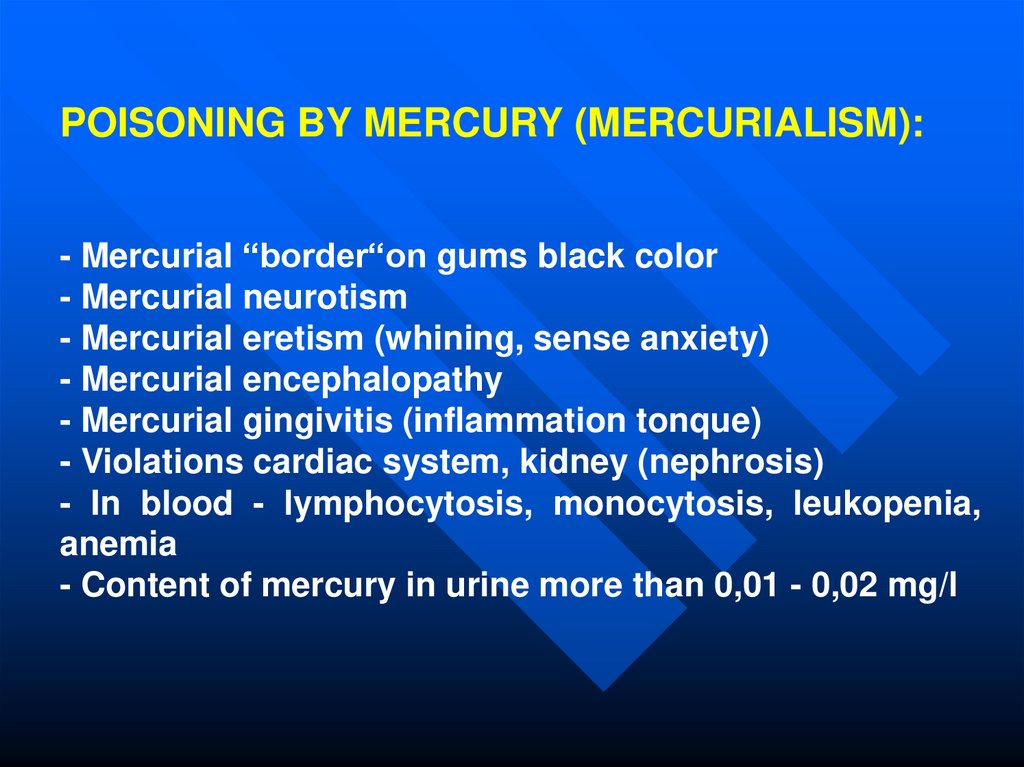













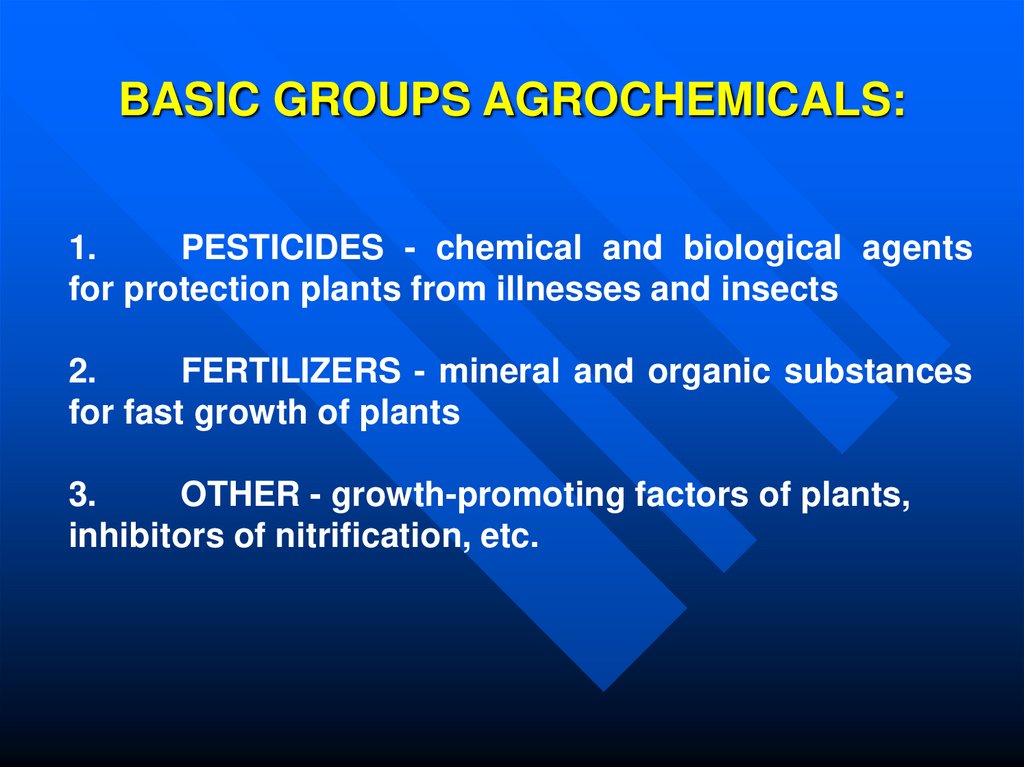




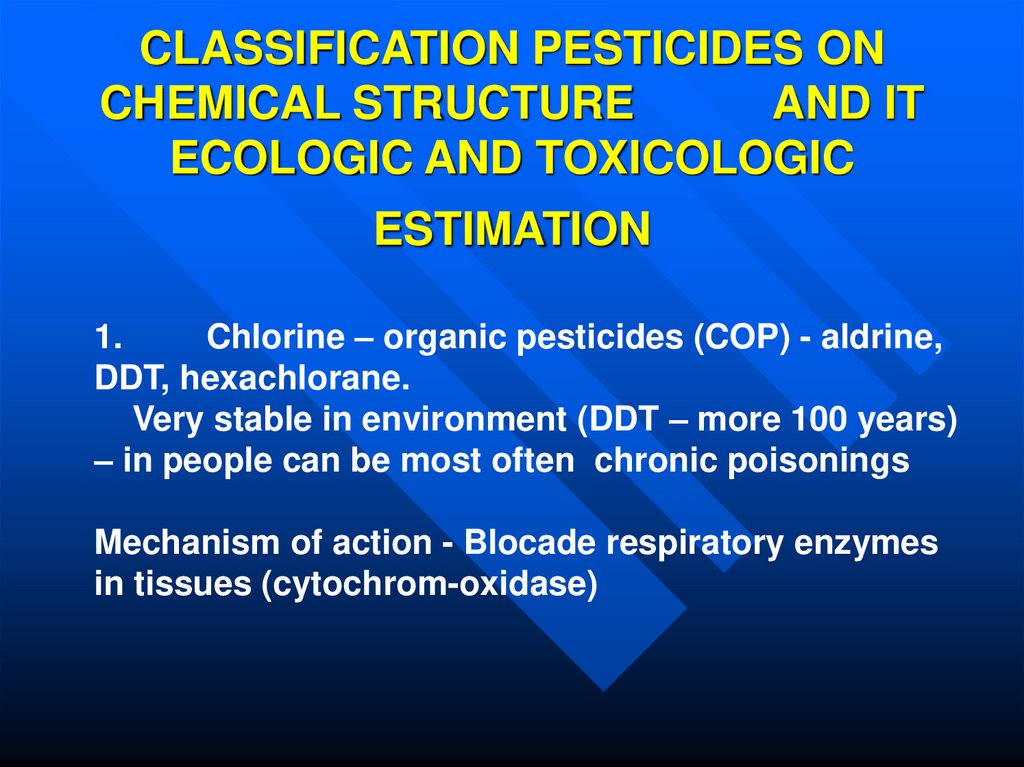




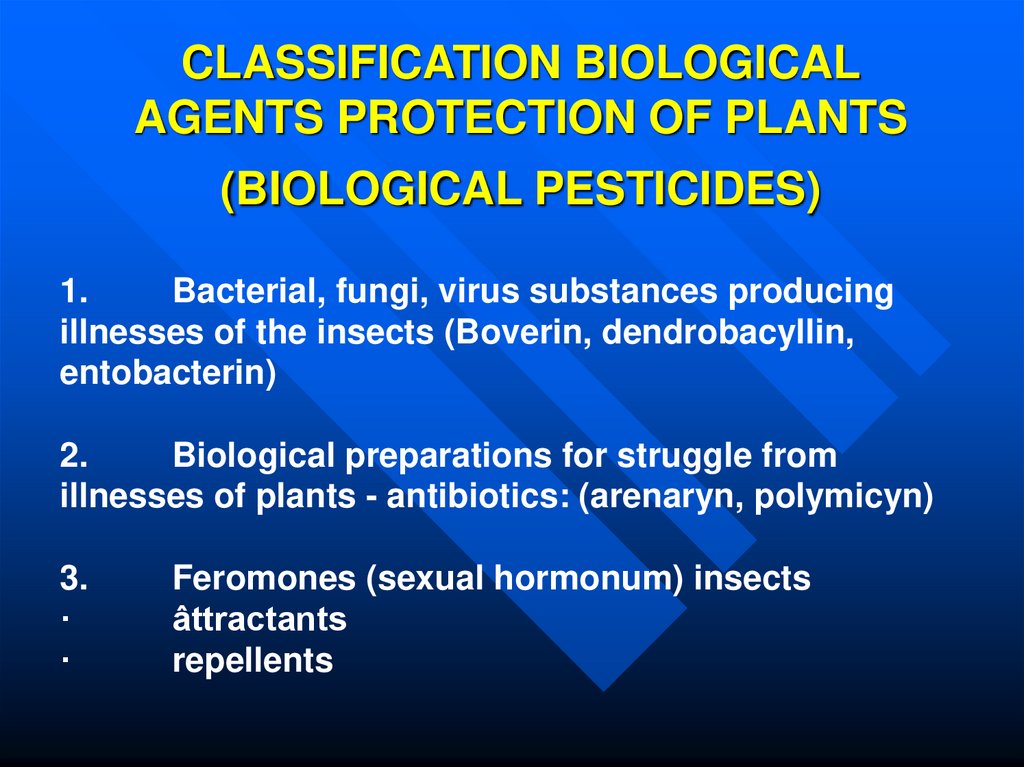
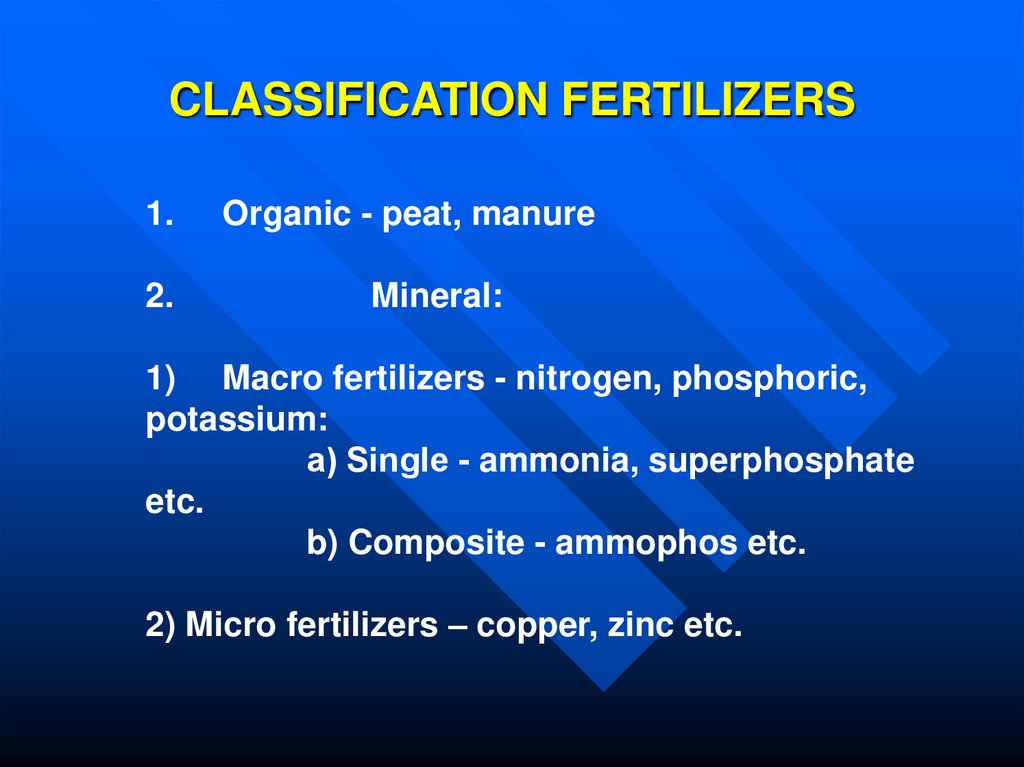









 БЖД
БЖД Промышленность
Промышленность








